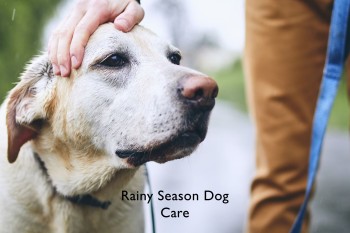Downer's Cow Syndrome: Causes, Symptoms, Diagnosis, and Treatment 🐄🤕💉🔬
Definition of Downer's Cow Syndrome
Downer's cow syndrome, also known as bovine
downer syndrome or simply "downer cows," is a condition that affects
cattle and causes them to become unable to stand or walk.
Etiology of Downer's Cow syndrome
Downer's cow syndrome can be caused by a variety
of factors, including:
Metabolic imbalances: Changes in the cow's metabolism, such as low calcium levels
(hypocalcemia), low magnesium levels (hypomagnesemia), or low blood sugar (hypoglycemia),
can lead to Downer's cow syndrome.
Trauma: Traumatic
injuries, such as fractures, nerve damage, or muscle damage, can cause cows to
become unable to stand or walk.
Infections: Infections,
such as bacterial or viral infections, such as Bovine viral diarrhea virus
(BVDV), Listeriosis, Bovine spongiform encephalopathy (BSE), Botulism,
Infectious bovine rhinotracheitis (IBR) can cause inflammation and damage to
the nervous system, leading to Downer's cow syndrome.
Toxins: Exposure
to toxins, such as lead, can cause neurological damage and lead to Downer's cow
syndrome.
Genetic predisposition: Some breeds of cattle are more susceptible to metabolic
imbalances, such as hypocalcemia, which can increase their risk of developing
Downer's cow syndrome.
Age and production stage: Cows that are in advanced stages of lactation or late in pregnancy
are at higher risk of developing Downer's cow syndrome, as they may experience
metabolic imbalances or trauma
Epidemiology of downer's Cow Syndrome
The epidemiology of Downer's cow syndrome varies
depending on the underlying causes and risk factors.
Prevalence: The
prevalence of Downer's cow syndrome varies among dairy and beef herds, but it
is generally low. Studies have reported incidence rates ranging from less than
1% to 10% of the cow population.
Risk factors: Risk
factors for Downer's cow syndrome include age, production stage, breed,
management practices, and various diseases and conditions such as metabolic
disorders, trauma, and infectious diseases.
Age: Downer's
cow syndrome is more common in older cows, particularly those in late lactation
or late pregnancy. This is likely due to the increased metabolic demands and
physical stress placed on the cow during these stages of production.
Production stage: Cows in early lactation are also at increased risk of developing
Downer's cow syndrome due to the demands of milk production and the risk of
metabolic disorders such as hypocalcemia.
Breeds: Some
breeds of cattle are more prone to metabolic disorders and are therefore at
higher risk of developing Downer's cow syndrome. For example, Holstein cows
have a higher incidence of hypocalcemia and subsequent Downer's cow syndrome
compared to other breeds.
Management practices: Management factors such as nutrition, housing, and calving
management can also impact the risk of Downer's cow syndrome. For example, cows
housed in poorly maintained facilities or with insufficient space may be more
prone to injuries that can lead to the condition.
Pathogenesis of Downer’s Cow Syndrome
The pathogenesis, or the process by which
Downer's cow syndrome develops, varies depending on the underlying cause of the
condition. However, in general, the pathogenesis of Downer's cow syndrome
involves a disruption of the normal function of the nervous and musculoskeletal
systems. Here are some general points about the pathogenesis of this condition:
Nervous system dysfunction: In many cases, Downer's cow syndrome is associated with neurological
dysfunction, which can result from a range of causes such as infections,
metabolic disorders, or physical trauma. Neurological dysfunction can cause a
cow to lose coordination and become unable to stand or walk normally.
Musculoskeletal dysfunction: In addition to neurological dysfunction, Downer's cow syndrome can
also result from musculoskeletal dysfunction. For example, cows with injuries
or fractures may be unable to stand or bear weight on their limbs, leading to
the development of Downer's cow syndrome.
Metabolic factors: Metabolic disorders such as hypocalcemia (milk fever) and
hypomagnesemia can also contribute to the development of Downer's cow syndrome.
These conditions can cause muscle weakness, tremors, and seizures, which can
ultimately lead to an inability to stand or walk normally.
Secondary complications: Cows with Downer's cow syndrome may also develop secondary
complications such as pressure sores, muscle atrophy, or infections, which can
further exacerbate their condition and impact their overall health and welfare.
Lesions of Downer's Cow syndrome
Downer's cow syndrome is a clinical
manifestation of various underlying conditions, rather than a specific disease
with characteristic lesions.
Here are some examples of lesions that may be
observed in cows with Downer's cow syndrome:
Fractures or dislocations: Cows with fractures or dislocations of the limbs or spine may
exhibit damage to bone and soft tissue, as well as changes in the musculature
and nerve tissue.
Pressure sores: Cows that are unable to stand or move properly due to neurological
or musculoskeletal dysfunction may develop pressure sores from lying down for
prolonged periods. These may be visible as areas of necrotic or damaged tissue
on the skin.
Muscle atrophy: Cows with Downer's cow syndrome may experience muscle atrophy, or
wasting, due to a lack of use of certain muscle groups. This can be seen as a
loss of muscle mass and decreased muscle tone on post-mortem examination.
Metabolic abnormalities: Cows with metabolic disorders such as hypocalcemia may exhibit
changes in the organs associated with these conditions. For example, cows with
hypocalcemia may show changes in the kidneys, liver, and heart.
Signs and Symptoms of Downer's Cow Syndrome
The signs and symptoms of Downer's cow syndrome
may vary depending on the underlying cause, but common signs and symptoms
include:
Inability to stand or walk normally: The hallmark sign of Downer's cow syndrome is a cow that is unable
to stand or walk normally. The cow may lie down and be unable to rise, or may
be able to stand but have difficulty walking or may have a wobbly gait.
Weakness: Cows
with Downer's cow syndrome may appear weak or lethargic. They may be less
responsive to stimuli and have decreased appetite.
Muscle tremors: Cows with Downer's cow syndrome may experience muscle tremors or
twitching.
Dehydration: Cows
with Downer's cow syndrome may become dehydrated due to their inability to
stand and drink water. Signs of dehydration may include dry mucous membranes,
sunken eyes, and decreased skin elasticity.
Pressure sores: Cows that are unable to stand or move properly may develop
pressure sores from lying down for prolonged periods. These may be visible as
areas of necrotic or damaged tissue on the skin.
Pain: Cows
with Downer's cow syndrome may experience pain, especially if the underlying
cause is an injury or fracture.
Here are some other signs and symptoms that may
be observed in cows with different underlying causes of Downer's cow syndrome:
Metabolic disorders: Cows with metabolic disorders such as hypocalcemia (milk fever)
may exhibit signs of restlessness, reduced appetite, decreased milk production,
dry muzzle, a decrease in body temperature, and a weak pulse. They may also
experience muscle tremors, muscle stiffness, or spasms, and have difficulty
standing up or lying down.
Trauma: Cows
with injuries or fractures may exhibit localized swelling or tenderness at the
site of the injury. They may be unable to put weight on the affected limb or
show a reluctance to move.
Nervous system disorders: Cows with nervous system disorders such as spinal cord injuries or
infections may show signs of weakness or paralysis in the limbs, have
difficulty standing or walking, or may exhibit a wobbly or uncoordinated gait.
Infectious diseases: Cows with infectious diseases such as septicemia or meningitis may
exhibit signs of fever, lethargy, anorexia, and may show neurological signs
such as tremors, seizures, or ataxia (loss of coordination).
Nutritional disorders: Cows with nutritional deficiencies such as copper or vitamin E
deficiency may exhibit muscle weakness, muscle tremors, and ataxia.
Diagnosis of Downer's Cow Syndrome
The diagnosis of Downer's cow syndrome requires
a thorough physical examination of the affected cow and a complete history of
the animal's health and management. Diagnostic tests may be necessary to
determine the underlying cause of the condition.
The following are some diagnostic tests that may
be performed:
Blood tests: Blood tests may be performed to
assess the cow's metabolic profile and check for infectious diseases.
Radiography: Radiography may be used to identify
bone fractures or other structural abnormalities.
Ultrasonography: Ultrasonography may be used to
assess soft tissue injuries or infections.
Electromyography: Electromyography is a
diagnostic technique used to assess nerve and muscle function and may be used
to identify nervous system disorders.
CSF analysis: If a nervous system disorder is
suspected, a sample of cerebrospinal fluid (CSF) may be collected and analyzed.
In addition to these tests, a thorough physical
examination may be used to identify pressure sores or other lesions on the
skin, as well as any signs of dehydration or malnutrition.
Treatment of Downer's cow syndrome
The treatment of Downer's cow syndrome depends
on the underlying cause of the condition. In general, the following treatments
may be used:
Calcium therapy: If the cow is suffering from hypocalcemia (milk fever), calcium
therapy may be administered. Calcium therapy involves administering a solution
of calcium borogluconate or calcium gluconate via intravenous injection or
subcutaneous injection.
Metabolic disorders: In addition to calcium therapy, other treatments for metabolic
disorders such as hypoglycemia or ketosis may include providing glucose or
dextrose via intravenous injection or oral administration.
Glucose/dextrose: The dosage of glucose or dextrose will depend on the specific product
being used. A commonly used product is 50% dextrose solution, which can be administered
at a dosage of 250-500 ml per 100 kg body weight, via intravenous injection.
Glucose may also be administered via oral administration, typically in a dosage
of 500 ml to 1 L, diluted in water or electrolyte solution.
Antibiotics: If the cow has an infectious disease, antibiotics may be
prescribed to treat the infection. The specific antibiotic and dosage will
depend on the type of infection and the cow's weight. Commonly used antibiotics
in cows include penicillin, oxytetracycline, and ceftiofur.
Infectious diseases: Treatment for infectious diseases may involve administration of
antibiotics, supportive care such as fluid therapy, and management of any
associated complications such as sepsis or pneumonia.
Antibiotics: Dosages
and administration of antibiotics will vary depending on the specific product
being used and the underlying infection. Penicillin, for example, can be
administered at a dosage of 10,000-20,000 units per kg body weight, once or
twice a day, via intravenous or intramuscular injection. Oxytetracycline can be
administered at a dosage of 4-10 mg per kg body weight, once or twice a day,
via intravenous or intramuscular injection.
Anti-inflammatory drugs: Non-steroidal anti-inflammatory drugs (NSAIDs) such as flunixin
meglumine or meloxicam may be used to reduce inflammation and relieve pain.
Trauma: If the
cow has suffered an injury or fracture, treatment may involve immobilizing the
affected limb or joint, providing pain relief and anti-inflammatory
medications, and providing supportive care such as good quality bedding and
adequate nutrition.
Nervous system disorders: Treatment for nervous system disorders may involve administration
of anti-inflammatory medications or steroids to reduce inflammation and
swelling in the affected tissues. If an infection is suspected, antibiotics may
be prescribed. In some cases, surgery may be necessary to relieve pressure on
the spinal cord or other affected tissues.
Anti-inflammatory drugs: Flunixin meglumine is a
commonly used NSAID in cows. The typical dosage is 1-2 mg per kg body weight,
administered via intravenous or intramuscular injection, once or twice a day
for up to three days. Meloxicam is another NSAID that can be administered at a
dosage of 0.5 mg per kg body weight, once a day for up to three days.
Steroids: Dexamethasone
is a commonly used steroid in cows. The dosage is typically 0.05-0.1 mg per kg
body weight, administered via intravenous or intramuscular injection, once a
day for up to three days.
Nutritional therapy: If the cow is suffering from a nutritional deficiency, such as a
copper or vitamin E deficiency, nutritional therapy may be used to correct the
deficiency. This may involve feeding the cow a diet that is high in the
deficient nutrient or administering the nutrient via injection.
Nutritional disorders: Treatment for nutritional disorders such as copper or vitamin E
deficiency may involve providing the deficient nutrient via injection or
supplementing the cow's diet with a feed that is high in the deficient
nutrient.
Copper: Copper
supplements can be administered via injection or as an oral drench. Dosages
will depend on the specific product being used and the cow's weight. As a
general guideline, copper sulfate can be administered at a dosage of 1-2 g per
100 kg body weight, once a day for up to three days.
Vitamin E: Vitamin
E can be administered via injection or as an oral supplement. Dosages will
depend on the specific product being used and the cow's weight. As a general
guideline, vitamin E can be administered at a dosage of 500-1000 IU per kg body
weight, once a day for up to three days.
Physical therapy: Physical therapy, such as massage or stretching exercises, may be
used to improve muscle function and mobility.
Dosages and administration of medications for
Downer's cow syndrome will vary depending on the specific medication, the
underlying cause of the condition, and the cow's weight and condition. Dosages
and administration should be determined by a veterinarian.
These are general guidelines and dosages and administration
should always be determined by a veterinarian.
Prevention and control of Downer's Cow Syndrome
Proper nutrition: Providing cows with a balanced diet that meets their nutritional
needs is essential for preventing Downer's cow syndrome. This includes ensuring
adequate intake of minerals such as calcium and phosphorus, which are important
for maintaining bone health.
Timely veterinary care: Early detection and treatment of any underlying infections or
other conditions can prevent the development of Downer's cow syndrome. Regular
veterinary check-ups and prompt treatment of any health issues can help prevent
the condition from occurring.
Proper management: Proper management of cows, including regular exercise, good
hygiene, and appropriate housing conditions, can also help prevent the
development of Downer's cow syndrome. This includes providing cows with
adequate space, clean and dry bedding, and good ventilation.
Vaccination: Vaccination
can help prevent some of the infections that can lead to Downer's cow syndrome,
such as infectious bovine rhinotracheitis and bovine viral diarrhea.
Breeding: Some
breeds of cattle may be more prone to developing Downer's cow syndrome than
others. Careful breeding programs can help reduce the risk of the condition in
future generations of cattle.

















